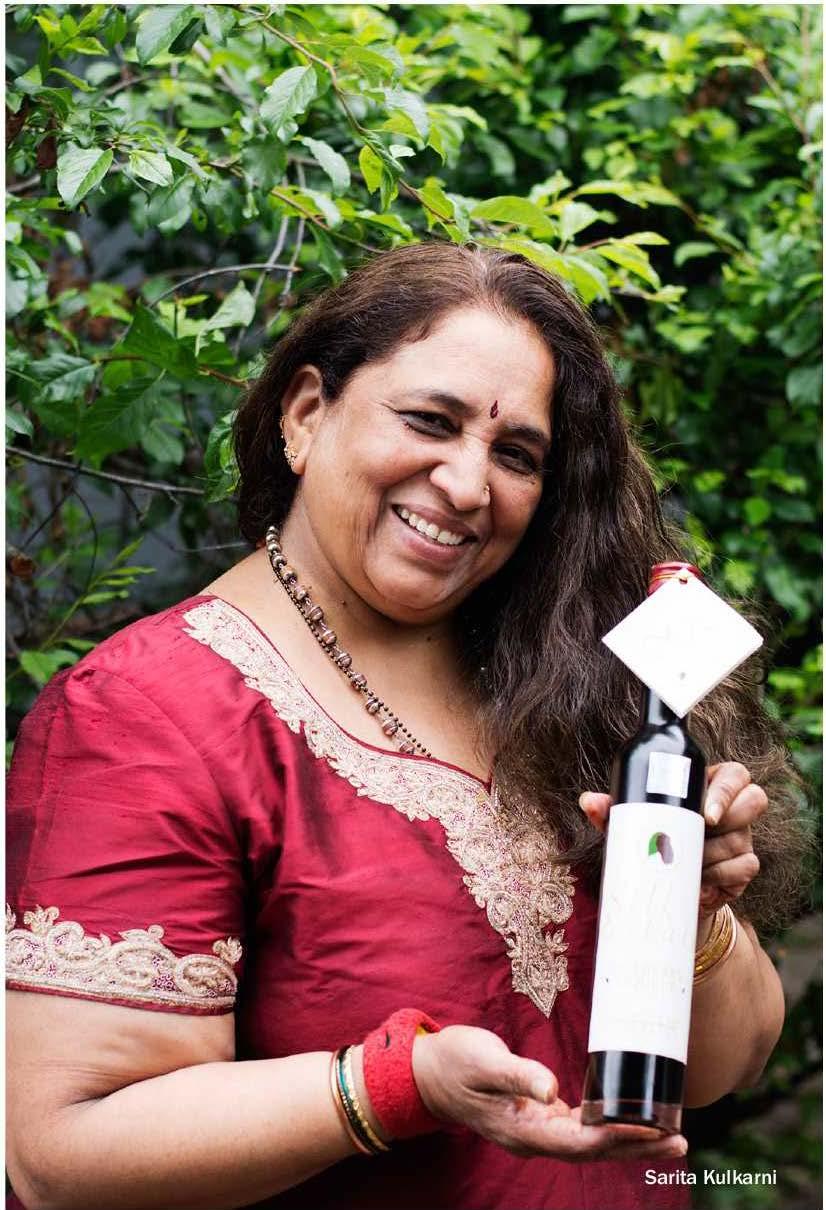
2 minute read
01n rou err
from 2017-01 Sydney (1)
by Indian Link
A Victorian farm is determined to redefine silk farmingforAustralia, butfornow, it's wine and liqueur
wheretheystarted tl1e mulberry plantationin2005.
BYDHANYASAMUEL
Silk Estate,a beautiful twohectare expanse on theSouth Gippsland Highway,is the dream project of Sarita Kulkarni, who is determined to helpAustralia rediscoverits longlostsilkgrowingindustry.
In a bidtoshowcasethatgrowing mulberries canbe a commerciallyviable and sustainablecrop industry, apart from its sericulrure use,Saritabegangrowing mulberrytreesonher estate. Today,it makes for a breathtakinglybeautiful sight insummer, with trees laden with thousands of sweet berries. The fruit evenruaUygets bottled as mulberry wineor liqueur and as pure mulberrysyrup.
A nativeof Karnataka,Sarita arrived in Melbournein 1987 followingher engineer husband. Armed with al\fasters inZoology (specialisationinsericulmre from Dharwad University,Karnataka), she also had ample experience teachingand workingin the sericulrure iJ1dustryin India.

Sarita wasverypassionateandambitious about her sericuJmre work, so shedecided to further her expertisebydoinga PhD.
Bue, unfortunately,Australia's sill,industry haddiedJongagoand noone seemed to know anythingaboutit. Quiteoften,she was taunted whenpeoplerespondedthat theyknewonly'Aussieculture'andnot 'sericulnue'.
Not one to accept defeat,Sarita went on toget a secondMaster's degreein Applied Agriculture/Entomology froml\fonash University, andin 1994, began work with the Agriculture Department workingher way up tobe a quarantineofficer.It is here chat shegot theopportunityto work closely with, andunderstand,tl1efarmingpractices andindustrywith.in Australia, also working extensively with thegrapevine industry here.
Beingknowledgeable aboutAustralia's golden silk era,Sarita was positive that it was onlya matter of timebefore she would findmulberry trees here. J\J1d that opportunity came aftera chance encounter with Monnie Penner who used to maintain silkwormsto spinsilk for her weavingand craft activities.Sarita's excitement knew no bounds wben she came across anursery which was sellingtwo-year-old mulberry trees to thepublic who were interestedin growingtheseintl1eir backyardsfor tl1e sweet fruit.
Thisrelentless enthusiasm andpassion forher subject made herplace anorder for 20 mulberry trees, apersonal attempt co prove that the silk industrycan be revived andcommercialisedintbis country.This eventually led co the Silk Estate farm, which Sarita andher familypurchasedi.n2003 and lo an attempttoprove that it can be acash cropand mulberrycultivation isan organic and sustainableventure, she began topackageandsell the berries to markets across Australia. \'v'hile Sydney cook to these delicious berries in a bigway,Melbourne markets were abitsceptical. And this presentedanother chaUeoge; mulberrieshave an extremely short season. Sarita was forced toresearch bow to preserve these for longer, and th.is led tothe mulberry liqueur, wine, syrup and ;am project. ot one tosit still, she also runs a successful businessand is the Quality Assurance Inspectorand Entomological/ Quarantine andSericulrureConsultant at BrijBugTrap ConsultancyPryLtd. She also worksas CommunityDevelopment Officer/Trainer/Lifecoach with the VictorjanImmigrantandRefugeeWomen's Coalition (VIC& RWC). She is also a trainer with Learn L ocals in the community in manydisciplines, to keeptheproject afloatandviable.'1 am extremelythankful to each and everyone for their effort in rnakit1g thisventurepossible," she told IndianUnk.
Sarita refused toaccept the fact that silk does not fare well here as depictedin the history of Australian silk, but her repeatedanempts toget the universitiesor tl1egovernment interestedfellon deaf ears. Projectsand studies were taken upand discarded for the silk venture; soshe decided that it was time toshowcasethe versatilityof mulberry as afruit andin adifferent light to the public.
Whenthe Silk Estate MulberryLiqueurwon abronze award at aninternational wine show iu2011,Saritaknew shewas on theright path. Today, the liqueur andsyrup is produced in smallbatches every year, dependii1gon the crop, in association with aVictorian companyand isavailable for sale onrequest A boutique product handcraftedwith lovingtender care,the liqueur is sweet andvibranton thepalate remindingyou instantlyof port wmes.
The \VU1e makesan excellent pairingwithpoultry,seafood, desserts and can alsobe used in makingcocktails. The syrup is thick andsweet from the namral sugarspresentin mulberriesandwouldbe anincredible addition toanybakingproject.
In spiteof a majorhealth setback, Saritaisstillpassionate about takingher sericulnire work forwardin thehopethat the silk industry of Australiacan be revived. Silk Estate alsogrows otl1er produce, has asmalltempleonsite and Saritaalso hasplans cobuild a museum co educate, it1crease awareness and showcase her studies withsilkworms.
While the mulberryliqueur andother byproducts makeexcellent business sense, Sarita's realpassion remait1s for sericulture.
"Sericulrureis avibrant,incredible, prodigious, sustainable,environmentally friendlyand miraculous commoditygiven to mankindbyaccident,which should giveour agriculmreindustrya boost not onlyin the wine industry,bm alsointhe fruit, health,and well-beingof mankind," Saritaobserved,her passion fortl1efruit comingthrough clearly. "Thegurusof the sill<worldonce said tome when I wasin their country, togive them 100 hectares of land and theywillmake surethatAustralia willbe seen asoneof the copproducers in the world marker of silk production. le is this dream that keeps me alive. One day, I wish co see the silkindustryof Australia get uponits feet again witl1 a lot of help from families, government bodies,venture capitalists, and manyentrepreneurial dreamers whohave avision and similar goal."







